Lovis Corinth
Paintings
Portrait of Sophie Cassirer
Baccante
Flower Vase on a Table
Nude Girl, A Study
Model on her Break
Portrait of Elly
The Family of the Painter Fritz Rumpf
Chrysanthemums and Roses in a Pitcher
October Snow at the Walchensee
Cain
Chrysanthemums and Lilies
Selfportrait with skeleton
Sailor
Baccants Returning Home



The Artist and his Family (Family Portrait)




Great self-portrait in front of the Walchensee



Portrait Of The Pianist Conrad Ansorge




Walchensee with mountains and shore slope

Walchensee panorama, view from the pulpit










Charlotte Berend im weißen Kleid
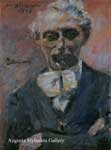


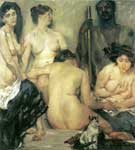







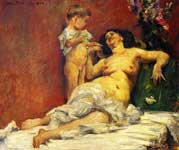




Portrait of the Pianist Conrad Ansorge




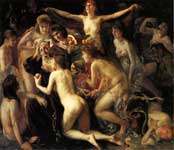
The Temptation of Saint Anthony


Drawings
The Youth of the Zeus
self-portrait
Female Semi-Nude with Hat
The Liaisons of Zeus




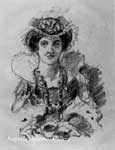
Anna Boleyn während des Turniers

Illustrations
Act with raised Shirt
Alexander and Diogenes
At Walchensee
Anne Boleyn during the tournament
Tree at Walchensee
Trees in the sun
The Corinthern : At breakfast
The Corinthern The servant Franz
The Corinthern : Petermannchen
Rowing Thomas : In the Corinthern
Studying Thomas : In the Corinthern
The Corinthern : Our house at Walchensee
The Corinthern : Wilhelmine in the toilet
Overlooking the Walchensee
beech wood
The king playing the flute
The Walchensee
The Walchensee (large series) : Larch on Walchensee
The Walchensee (large series) : Walchensee
The Walchensee (large series) : Walchensee landscape
The Walchensee (small series) : Larch with Herzogstandbahn
The Walchensee (small series ): terrace with entrance gate
The Walchensee (small series ): terrace with fountains on Walchensee
The Walchensee (small series) : Walchensee in winter
The Walchensee (small series) : Walchensee with Herzogstandbahn
The Walchensee (small series) : Walchensee with Jochberg
The Walchensee (small series) : Walchensee with chapel
The Walchensee (small series) : Walchensee with larch
The goat
The Getaway on the Ark
The Youth of the Zeus
The larch
The Expulsion from Paradise
The rising water
The Wives of Weinsberg
village Urfeld
Garden Walchensee
Large Walchenseelandschaft
House Walchensee
Job and his friends
In Stock from Legnica
Joseph interpreting Pharaoh 's dreams
Judith's return
Kallisto and Zeus Artemis
Cat on tree stump
Cross
warrior teaching
Landscape with birches
Leda and the Swan
Marie Antionette on the way to the scaffold

Potsdam , Sanssouci Palace of the Great Fountain of
Final leaf " tragi-comedies "
Self-portrait with wife
Self-portrait , drawing
Title page » tragi "
Struck's death in
death of Jesus
Death and old man
Death and youth
Death and artists
Death and pair
Death and wife
paradise Lost
Temptation of St. Anthony
Early Spring in the mountains : mountain lake
Early Spring in the mountains : Buchenwald
Early Spring in the mountains : Spring Walchensee
Early Spring in the mountains : Lake Shore
Early Spring in the mountains : Tal - base
walchensee
Walchensee in the moonlight
Walchensee in the fog
forest scene
Walpurgis Night
Winter at Walchensee
Lovis Corinth (21 July 1858 – 17 July 1925) was a German painter and printmaker whose mature work realized a synthesis of impressionism and expressionism.

Portrait of the Painter Lovis Corinth , Max Liebermann
Corinth studied in Paris and Munich, joined the Berlin Secession group, later succeeding Max Liebermann as the group's president. His early work was naturalistic in approach. Corinth was initially antagonistic towards the expressionist movement, but after a stroke in 1911 his style loosened and took on many expressionistic qualities. His use of color became more vibrant, and he created portraits and landscapes of extraordinary vitality and power. Corinth's subject matter also included nudes and biblical scenes.
Early life
Corinth was born Franz Heinrich Louis on 21 July 1858 in Tapiau, in Prussia. The son of a tanner, he displayed a talent for drawing as a child, and in 1876 he went to study painting in the academy of Königsberg. In 1880 he attended the Academy of Fine Art in Munich, which rivaled Paris as the avant-garde art center in Europe at the time. There he was influenced by Courbet and the Barbizon school, through their interpretation by the Munich artists Wilhelm Leibl and Wilhelm Trübner. Louis then traveled to Antwerp and then Paris where he studied under William-Adolphe Bouguereau at the Académie Julian. He returned to Königsberg in 1888 when he adopted the name "Lovis Corinth".
Career
In 1891, Corinth returned to Munich, but in 1892 he abandoned the Munich Academy and joined the Munich Secession. In 1894 he joined the Free Association, and in 1899 he participated in an exhibition organized by the Berlin Secession. These nine years in Munich were not his most productive, and he was perhaps better known for his ability to drink large amounts of red wine and champagne.
Corinth moved to Berlin in 1900, and had a one-man exhibition at a gallery owned by Paul Cassirer. In 1902 at the age of 43, he opened a school of painting for women and married his first student, Charlotte Berend, some 20 years his junior. Charlotte was his youthful muse, his spiritual partner, and the mother of his two children. She had a profound influence on him, and family life became a major theme in his art.
In December 1911, he suffered a stroke, and was partially paralyzed on his left side. Thereafter he walked with a limp, and his hands displayed a chronic tremor.[1] With the help of his wife, within a year he was painting again with his right hand. His disability inspired in the artist an intense interest in the simple, intimate things of daily life. In the summer of 1919, for example, he produced a cycle of casual etchings of his family in their country home.[2] It was also at this time that landscapes became a significant part of his oeuvre. These landscapes were set at the Walchensee, a lake in the Bavarian Alps where Corinth owned a house. Their lively picturing, in bright colors, tempt many to consider the Walchensee series as his best work. From 1915–25, he served as President of the Berlin Secession.
Printmaking
Corinth explored every print technique except aquatint; he favored drypoint and lithography. He created his first etching in 1891 and his first lithograph in 1894. He experimented with the woodcut medium but made only 12 woodcuts, all of them between 1919–1924.[3] He was quite prolific, and in the last 15 years of his life he produced more than 900 graphic works, including 60 self-portraits. The landscapes he created between 1919 and 1925 are perhaps the most desirable images of his entire graphic oeuvre. He painted numerous self-portraits, and made a habit of painting one every year on his birthday as a means of self-examination.[4] In many of his self-portraits he assumed guises such as an armored knight (The Victor, 1910), or Samson (The Blinded Samson, 1912).[5] A self-portrait of 1924 is in the Museum of Modern Art, New York City.
Honors and death
On 15 March 1921 Corinth received an honorary doctorate from the University of Königsberg.
In 1925, he traveled to the Netherlands to view the works of his favorite Dutch masters. He caught pneumonia and died in Zandvoort.
Legacy
In 1910 Corinth had donated the painting Golgatha for the altar of the church of his birthplace, Tapiau. At the end of the Second World War, when the Red Army invaded East Prussia, this painting disappeared without trace. Tapiau was among the few East Prussian places not devastated by the war, which makes it likely that the painting was looted rather than destroyed.
In 2007, the German city of Hanover returned a painting by Corinth to the heirs of Jewish collector Curt Glaser who sold it in 1933 to fund his escape from the Nazis. The painting, Romische Campagna (Roman Landscape) (1914) was handed to Glaser's heirs, represented by his U.S.-based niece and her daughter.[6]
The house where Corinth was born is still in the town, which is now Gvardeysk, Kaliningrad Oblast, Russia.
See also
Notes
Holland Cotter (12 June 1992), German Artist Haunted By a Threatening World New York Times.
Holland Cotter (12 June 1992), German Artist Haunted By a Threatening World New York Times.
Corinth, Schuster, Vitali, & Butts 1996, p. 369.
Corinth, Schuster, Vitali, & Butts 1996, p. 142.
Corinth, Schuster, Vitali, & Butts 1996, pp. 41–42.
1914 painting is returned to heirs Los Angeles Times, 25 September 2007.
References
Corinth, L., Schuster, P.-K., Vitali, C., & Butts, B. (1996). Lovis Corinth. Munich: Prestel. ISBN 3-7913-1682-6
Corinth, L., Uhr, Horst, Berkeley, Los Angeles, Oxford: University of California Press, 1990. ISBN 0-520-06776-2
External links
Gallery at "Museumsportal Schleswig-Holstein"
Gallery of works by Lovis Corinth
Corinth Gallery at MuseumSyndicate
German masters of the nineteenth century : paintings and drawings from the Federal Republic of Germany, a full text exhibition catalog from The Metropolitan Museum of Art, which contains material on Lovis Corinth (no. 13-16)
----
Fine Art Prints | Greeting Cards | Phone Cases | Lifestyle | Face Masks | Men's , Women' Apparel | Home Decor | jigsaw puzzles | Notebooks | Tapestries | ...
----
Artist
A - B - C - D - E - F - G - H - I - J - K - L - M -
N - O - P - Q - R - S - T - U - V - W - X - Y - Z
Retrieved from "http://en.wikipedia.org/"
All text is available under the terms of the GNU Free Documentation License



















